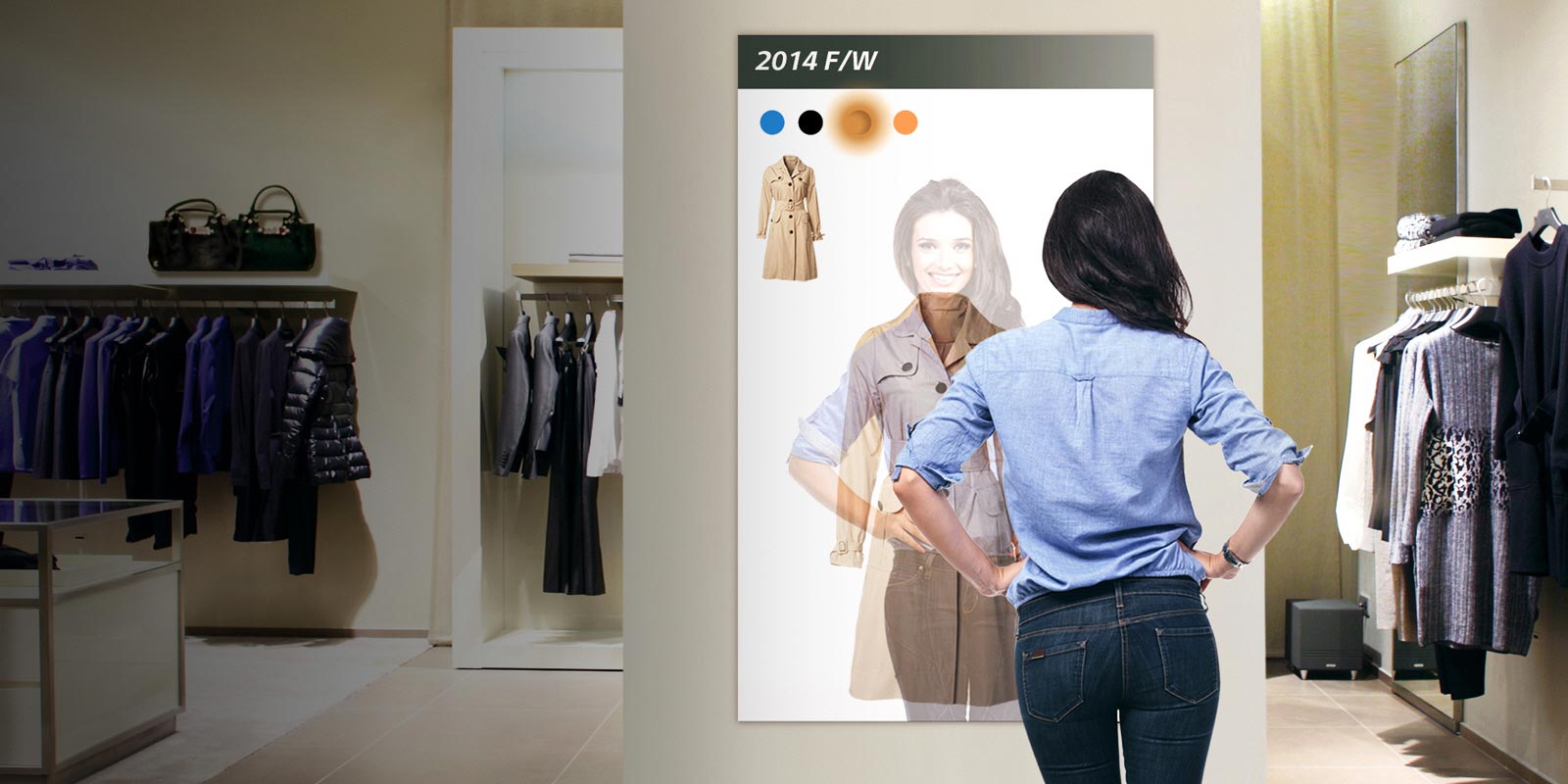There are already a few examples that illustrate the development of retail in the course of digitalization. Online retail is booming and is a serious competitor for stationary retail. The solution to counter this competition is digital stores, i.e. stores that inspire their customers with digital solutions and practical features at the point of sale and support them in their shopping. We show seven examples that should inspire retailers to take off with the help of digitalization in stationary retail and to be able to hold their own in the battle against online retail.

-
Stores without checkouts
“Amazon Go” stores are leading the way. Here, you can shop without going to the checkout. No more standing in line or waiting. Here’s how the system works: you download the “Amazon Go” app to your smartphone, hold the QR code entered there up to a scanner when you enter the store, and from that point on you are scanned and tracked as a 3D object. Sensors and cameras track what is packed into the shopping cart while in the store. At the end of the shopping trip, the customer can leave the store without paying. The customer then receives the bill conveniently in his app and by e-mail. This digital solution makes shopping much easier and also reduces shopping time for the customer – a positive shopping experience!
-
Stores without assortment
A complete store, but without an assortment on site. This is the system of “Nordstrom” Local stores. The company places special emphasis on detailed and qualified customer advice, as well as an unlimited online assortment. Since the store is much smaller than common stores, the customers can be looked after accordingly well on site. Using an app, customers can select their desired products, which are then delivered to the store from the company’s surrounding warehouses and branches. In the meantime, customers can take a seat at the bar or wait in the beauty area, easily escaping the stress of shopping in large or even crowded stores. In our opinion, a good example of how retailers can retain customers with the help of digital stores.
-
Digital mirrors
Rostock wasn’t really known as THE fashion capital until now. However, Benjamin Kühn, head of the Adcada group of companies in Bentwisch, has now taken a step in that direction. In his new clothing store, a „Fashion.Zone mirror“ is being used. Together with a South Korean company, he developed this technology himself. The purpose is to completely eliminate the need to try on clothes. Instead, the virtual mirror projects the clothes directly onto the customer’s body. In changing rooms that are often far too small, it’s not much fun to change several times. This technology saves you from having to do that.
-
Self-service checkouts in retail
Self-service checkouts are another way to make good use of digitization in the retail sector. As the name suggests, no cashiers are employed here. After picking out the products you want, you scan the products yourself at a checkout and pay directly. In grocery stores, you can even pay with cash there. At “IKEA”, where the system is also used, only credit cards are accepted. However, this system is not yet fully developed. Problems arise when buying alcohol or cigarettes. This is because the cash registers cannot yet perform an age check. This is different in our showcase „TYPY“. In our TYPY store, when purchasing age-restricted products, customers are simply asked for a photo ID upon payment. This has to be placed on our scanner by the customer and the system confirms the age.
-
Self-scanning directly at the shelf
One last method we would like to introduce is scanning directly at the shelf. Here the selected goods can be scanned directly and paid at the back of the scanner wall. In this way, queues at checkouts are avoided. “Tegut” launched this project back in 2014, but other grocery retailers and DIY stores have also used this system to make shopping easier for customers and to position themselves as successful digital stores in the face of competition.

